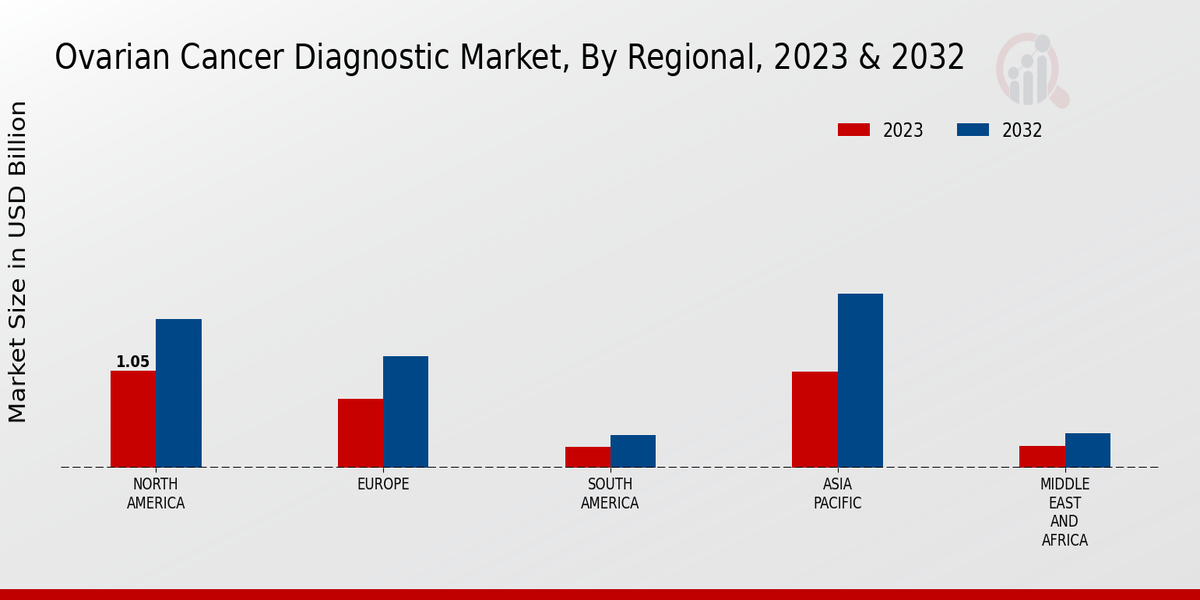Increased Awareness and Education
The growing awareness and education surrounding ovarian cancer are pivotal in shaping the Ovarian Cancer Diagnostics Market. Campaigns aimed at educating the public about the symptoms and risk factors associated with ovarian cancer have led to a heightened demand for diagnostic services. Organizations and healthcare providers are increasingly focusing on outreach programs that emphasize the importance of early detection. This increased awareness is likely to result in more women seeking diagnostic testing, thereby expanding the market. Additionally, educational initiatives are fostering a better understanding of the disease among healthcare professionals, which may lead to improved referral rates for diagnostic services. As awareness continues to rise, the Ovarian Cancer Diagnostics Market is poised for growth, driven by an informed patient population.
Government Initiatives and Funding
Government initiatives and funding play a crucial role in the advancement of the Ovarian Cancer Diagnostics Market. Various health authorities are allocating resources to support research and development in ovarian cancer diagnostics. For instance, funding for clinical trials and research projects aimed at discovering new diagnostic methods is becoming increasingly available. These initiatives not only enhance the scientific understanding of ovarian cancer but also promote the development of innovative diagnostic tools. Furthermore, government-backed awareness campaigns are encouraging women to undergo regular screenings, which is likely to increase the demand for diagnostic services. As these initiatives continue to evolve, they are expected to significantly impact the growth trajectory of the Ovarian Cancer Diagnostics Market.
Rising Incidence of Ovarian Cancer
The increasing incidence of ovarian cancer is a primary driver for the Ovarian Cancer Diagnostics Market. According to recent statistics, the number of new cases diagnosed annually has been on the rise, with estimates suggesting that approximately 22,000 women are diagnosed each year. This alarming trend underscores the urgent need for effective diagnostic tools and methods. As awareness of ovarian cancer grows, healthcare providers are more inclined to invest in advanced diagnostic technologies. The rising incidence not only highlights the necessity for early detection but also propels research and development efforts aimed at improving diagnostic accuracy. Consequently, the Ovarian Cancer Diagnostics Market is likely to experience substantial growth as stakeholders respond to this pressing public health challenge.
Advancements in Diagnostic Technologies
Technological innovations are significantly transforming the Ovarian Cancer Diagnostics Market. The advent of advanced imaging techniques, biomarker discovery, and genetic testing has revolutionized the way ovarian cancer is diagnosed. For instance, the integration of liquid biopsy technologies allows for non-invasive testing, which is gaining traction among clinicians. Furthermore, the development of next-generation sequencing (NGS) has enhanced the ability to identify genetic predispositions to ovarian cancer, thereby facilitating earlier diagnosis. These advancements not only improve diagnostic accuracy but also reduce the time required for diagnosis, which is crucial for effective treatment planning. As these technologies continue to evolve, they are expected to drive the growth of the Ovarian Cancer Diagnostics Market, attracting investments and fostering innovation.
Rising Demand for Personalized Medicine
The shift towards personalized medicine is emerging as a key driver in the Ovarian Cancer Diagnostics Market. As healthcare moves away from a one-size-fits-all approach, there is a growing emphasis on tailoring treatment plans based on individual patient profiles. This trend necessitates the development of diagnostic tools that can accurately identify specific biomarkers associated with ovarian cancer. The increasing availability of targeted therapies is further fueling the demand for precise diagnostic methods. Patients and healthcare providers are seeking diagnostics that not only confirm the presence of cancer but also provide insights into the most effective treatment options. Consequently, the Ovarian Cancer Diagnostics Market is likely to expand as stakeholders invest in the development of personalized diagnostic solutions.



















Leave a Comment